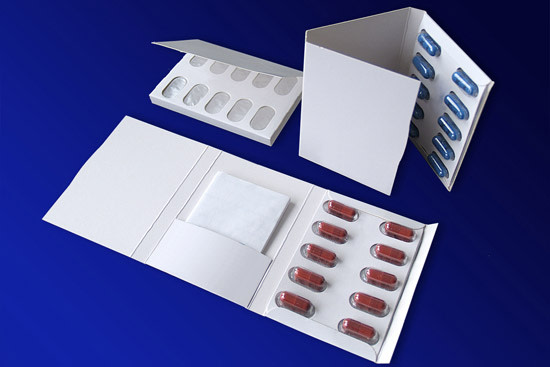Via sensors, microchips integrated in the packages constantly gather data on the product's condition such as moisture and temperature and issue an alarm when the values move outside the programmed upper and lower limits. Or there are chips that help patients take medicines in the correct dosage and punctually, emitting an audible signal indicating when it’s time to take the medicine. However, the microprocessors are capable of more: fed with such data as the filling location or date of manufacture, their products can be continuously traced – an important feature in the battle against piracy.
Industry sees huge potential in chips and is eagerly pursuing their development. The Organic Electronics Association (OE-A), a work group at the German Engineering Federation (VDMA), is working on the commercialisation of printable organic electronics. “Inexpensive, thin, flexible electronics, which, attached to flexible polyester substrates, can be easily integrated into packaging, will soon be a familiar feature in the retail industry,” says OE-A Chairman Wolfgang Mildner. With RFID, large volumes of information on goods can be retrieved or uploaded in a flash. The technology thus stands for a guarantee of authenticity and for distribution security. At interpack from 12 to 18 May 2011, the world's foremost event in the packaging industry, “communicative” packaging will also be high on the agenda.

Packages of the future are expected to have even more functions: they will interact with their contents, eliminate harmful oxygen and microbes and thus improve the product's keeping properties and quality. In Japan, oxygen-absorbing sachets have been in use for years to help vegetables and fish stay fresh for longer. However, Europeans and Americans are not so willing to accept the conspicuous packaging elements bearing the words “Do not eat”.
Researchers at the Fraunhofer Institute for Process Engineering and Packaging (IVV) in Freising have therefore developed more elegant preservation solutions. “We integrate oxygen absorbers like iron in the package’s polymer matrix,” says IVV materials developer Sven Sängerlaub. Oxygen-sensitive beverages like beer and fruit juices stay drinkable for longer in PET bottles processed in this way, he adds. The IVV also offers industry an antimicrobial film that releases sorbic acid onto the surface of the food, the prime point of attack for contamination, and thus preserves it. Product manufacturers can gain a detailed impression of the IVV’s innovations at interpack.


